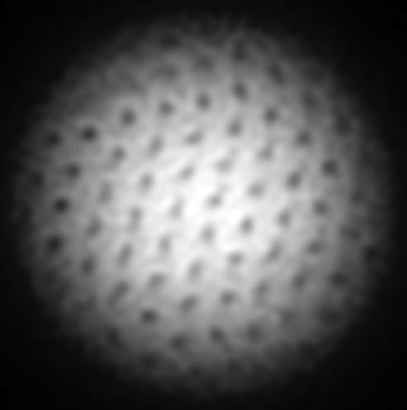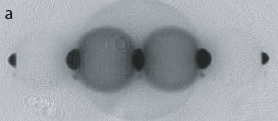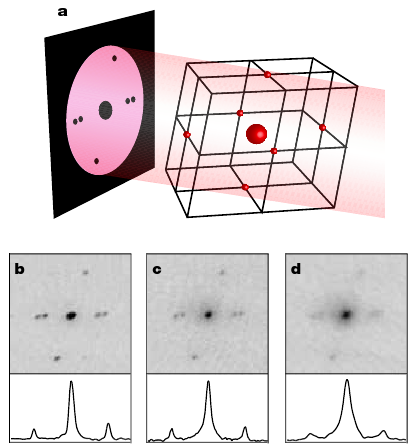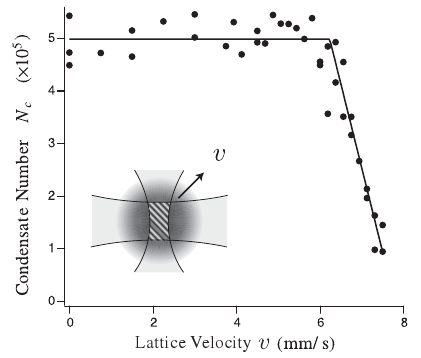Our machine has produced some remarkable results in its twelve-year long history. Here we give a brief overview of some of the highlights, in chronological order. Vortex arrays
Quantized vortices play a key role in superfluidity and superconductivity. The formation of highly ordered vortex lattices in a rotating Bose-condensed gas was observed here. These triangular lattices contained over 100 vortices with lifetimes of several seconds. Individual vortices persisted up to 40 seconds. The lattices could be generated over a wide range of rotation frequencies and trap geometries, shedding light on the formation process.
Science 292, 476 (2001)
Coherent molecular optics
Coherent molecular optics was performed using two-photon Bragg scattering. Molecules were produced by sweeping an atomic Bose-Einstein condensate through a Feshbach resonance. The spectral width of the molecular Bragg resonance corresponded to an instantaneous temperature of 20 nK, indicating that atomic coherence was transferred directly to the molecules. An autocorrelating interference technique was used to observe the quadratic spatial dependence of the phase of an expanding molecular cloud. Finally, atoms initially prepared in two momentum states were observed to cross pair with one another, forming molecules in a third momentum state. This process is analogous to sum-frequency generation in optics.
PRL 94, 040405 (2005)
Fermionic superfluidity Image Added Image Added
Superfluidity of a fermionic gas in an optical lattice was shown for the first time. The diffraction peaks observed after releasing the Fermi mixture from the lattice is characteristic for a superfluid. It was also shown that in a deeper lattice superfluidity is lost in a reversible way.
Nature 443, 961 (2006)
Critical velocity
The critical velocity of a superfluid mixture of the lowest two spin states of Lithium-6 was measured by moving a lattice at constant speed through the atom cloud. When the lattice velocity exceeds the critical velocity, dissipation kicks in and an atom loss can be measured.
PRL 99, 070402 (2007)
|